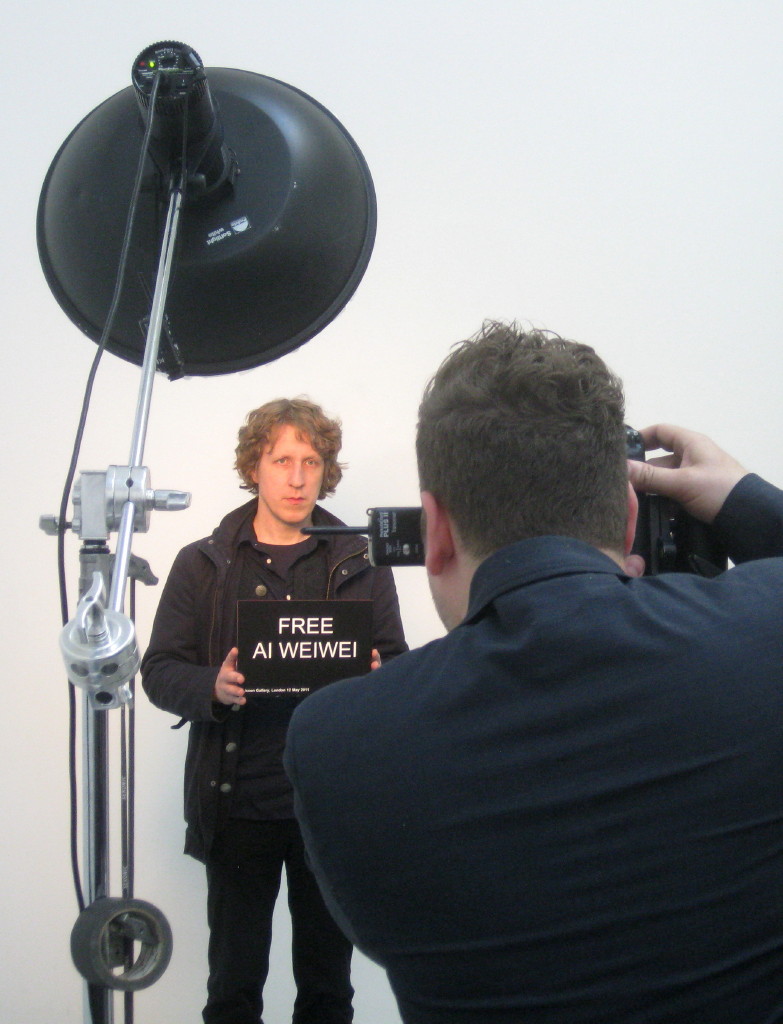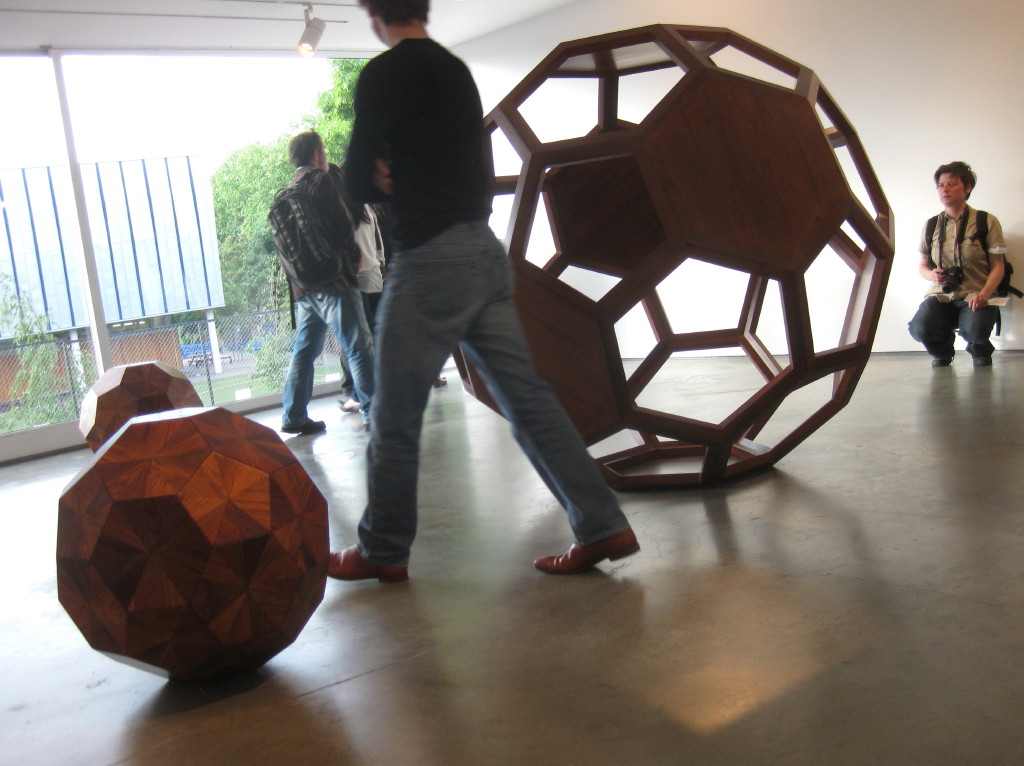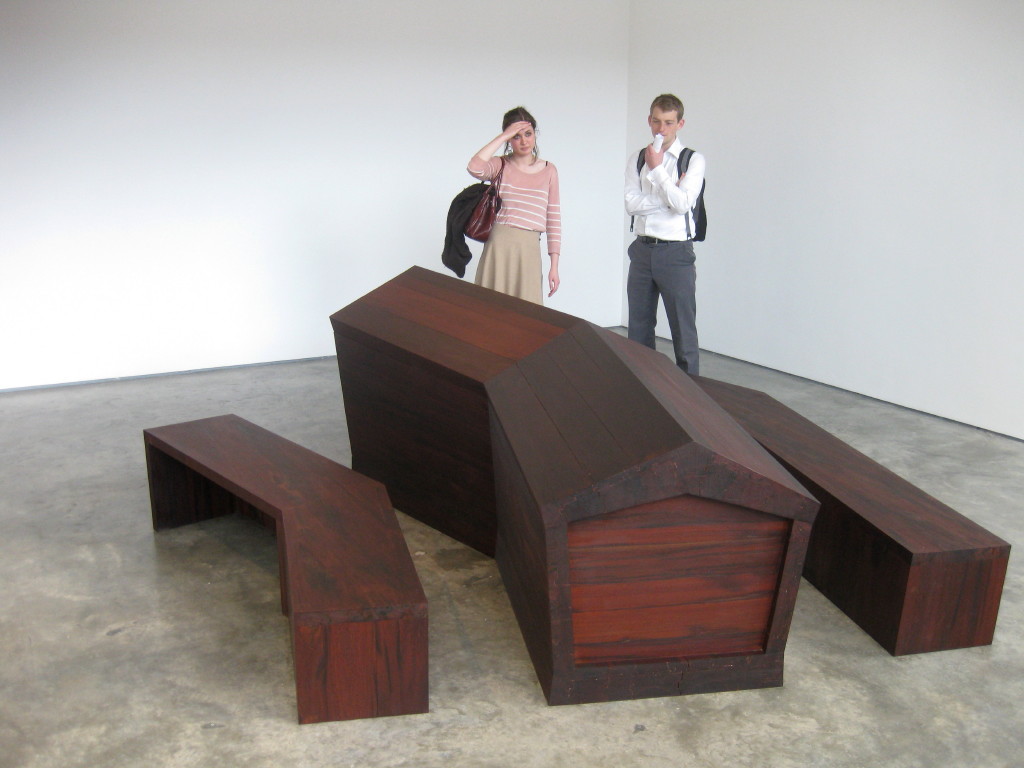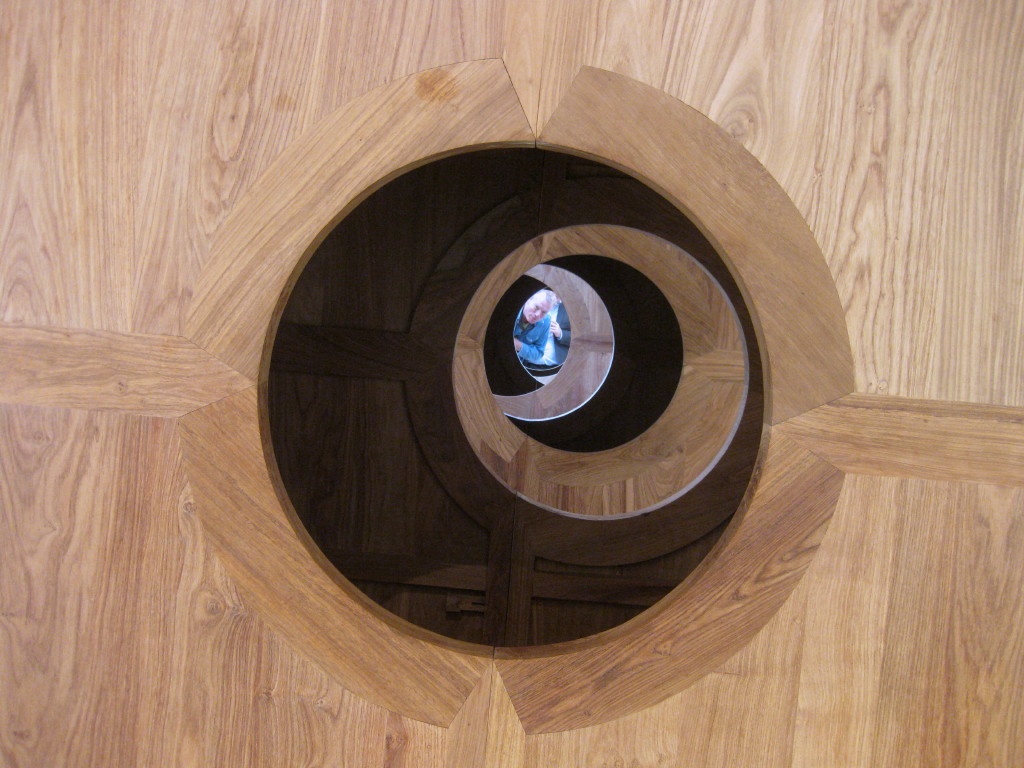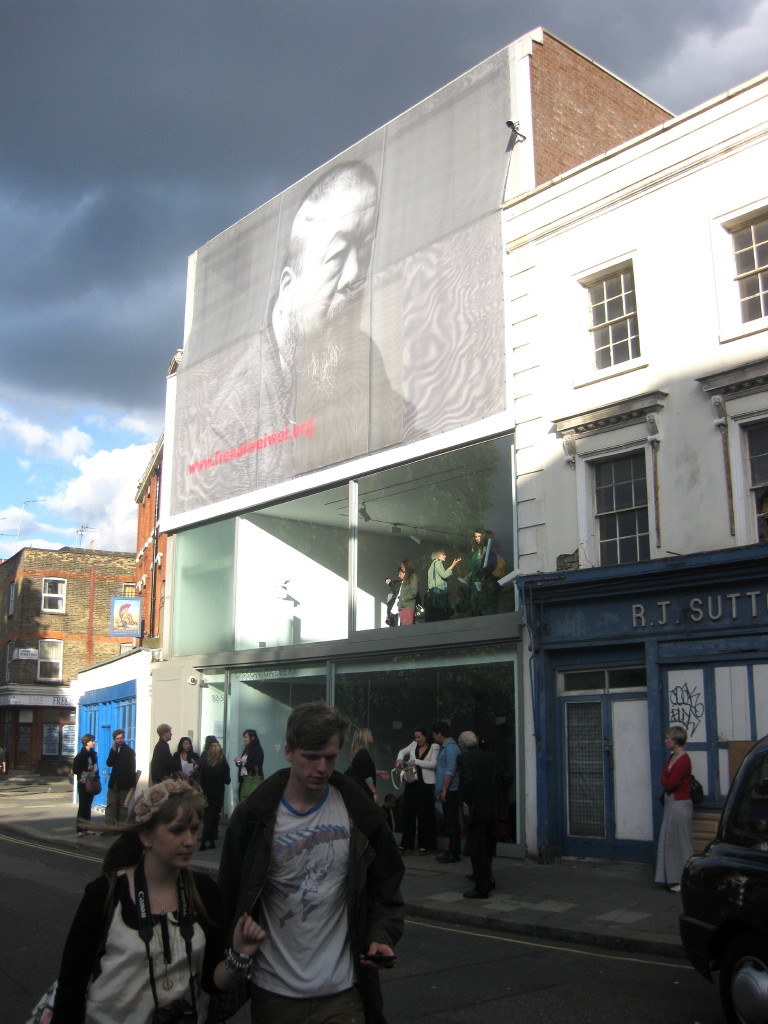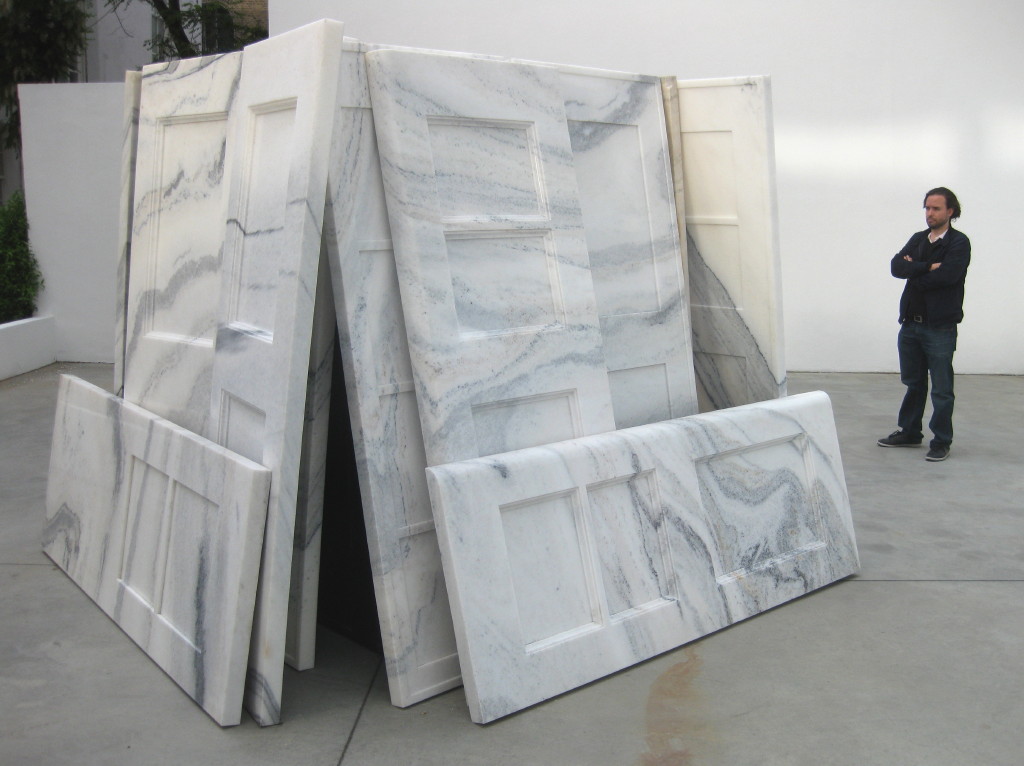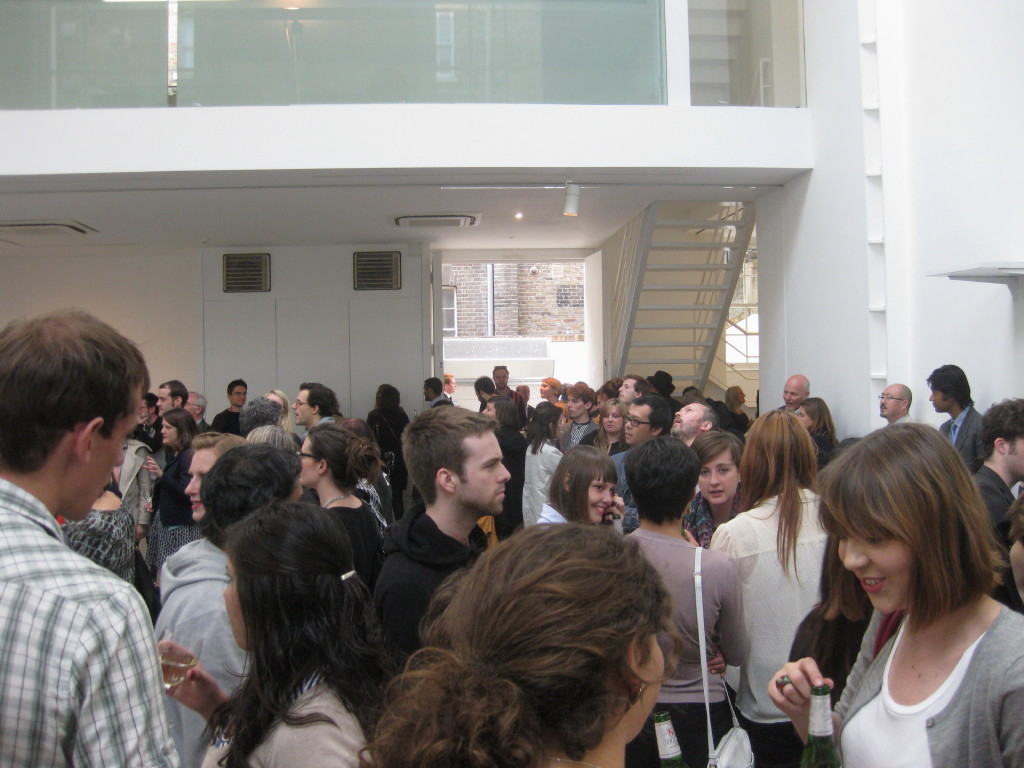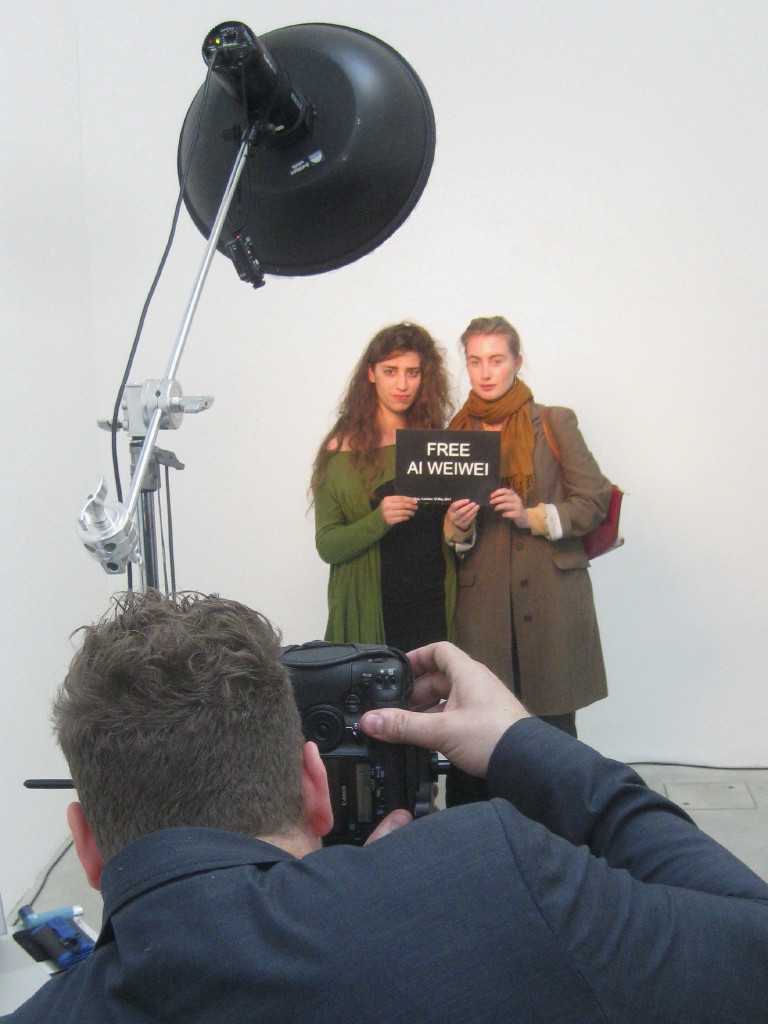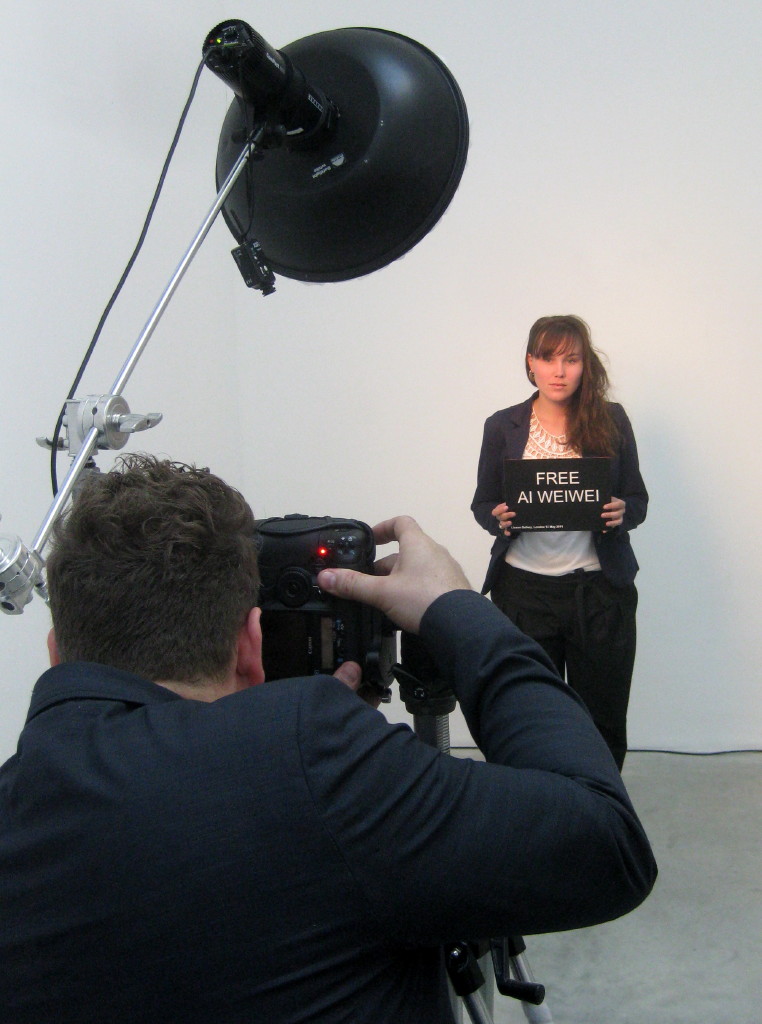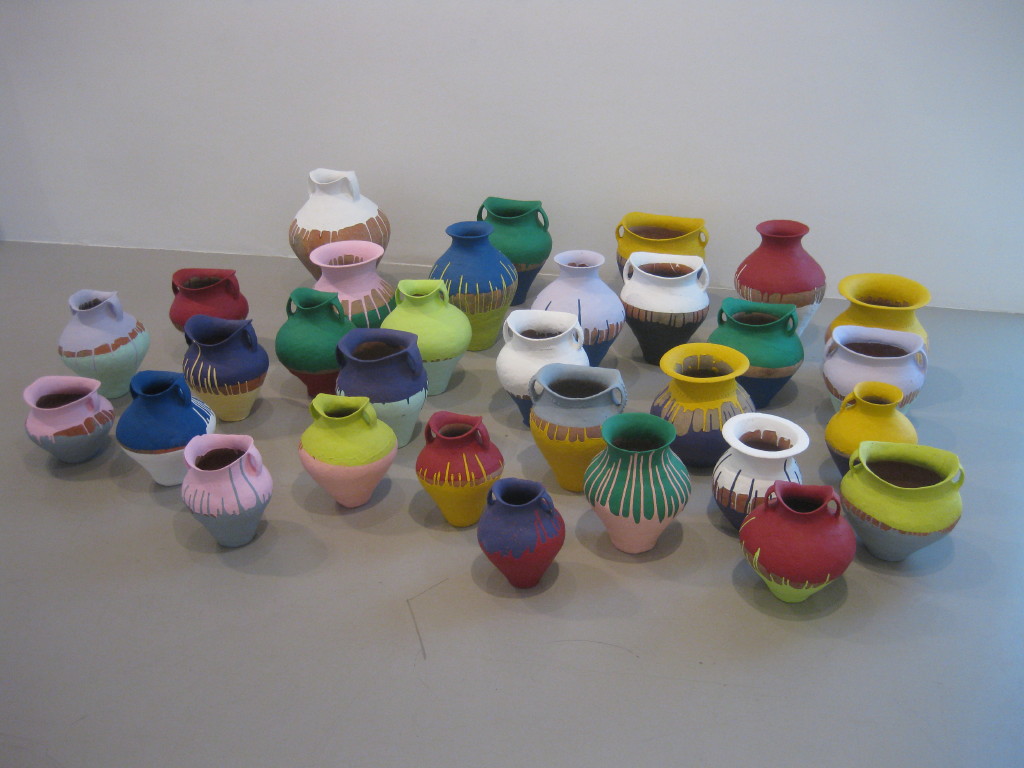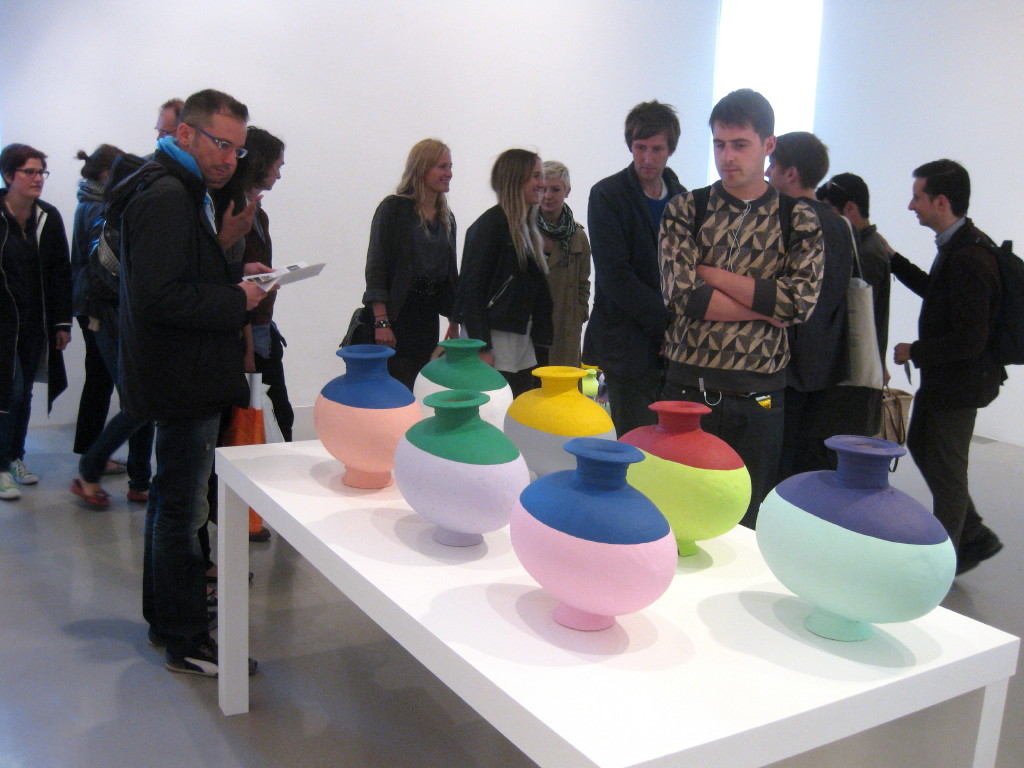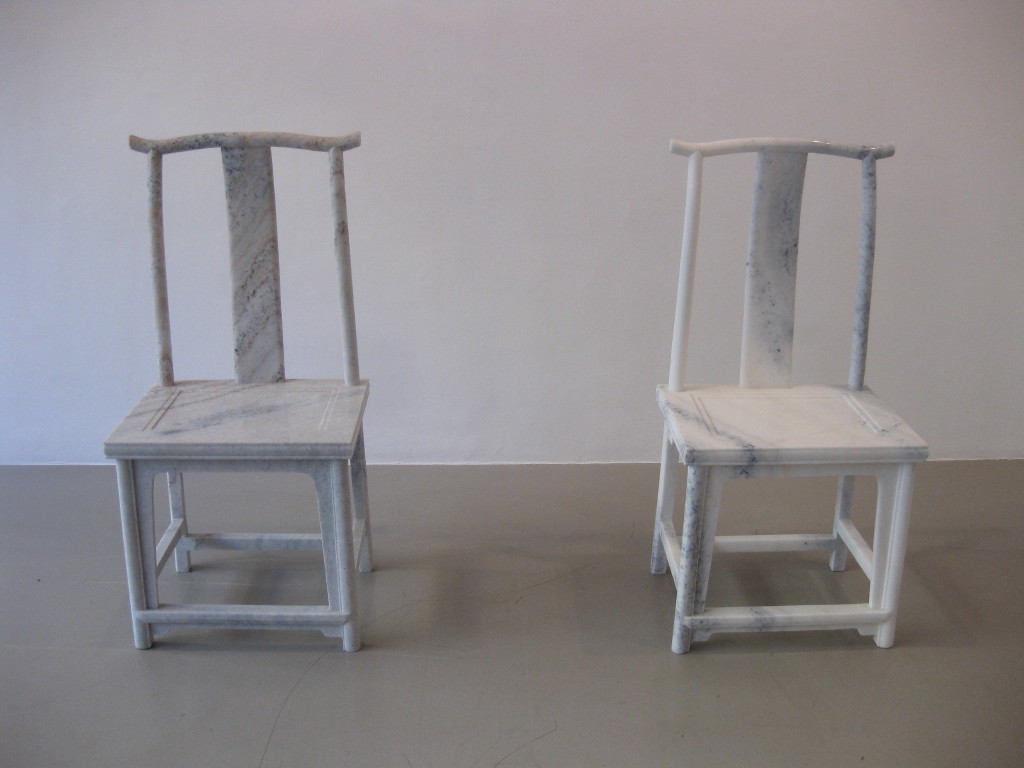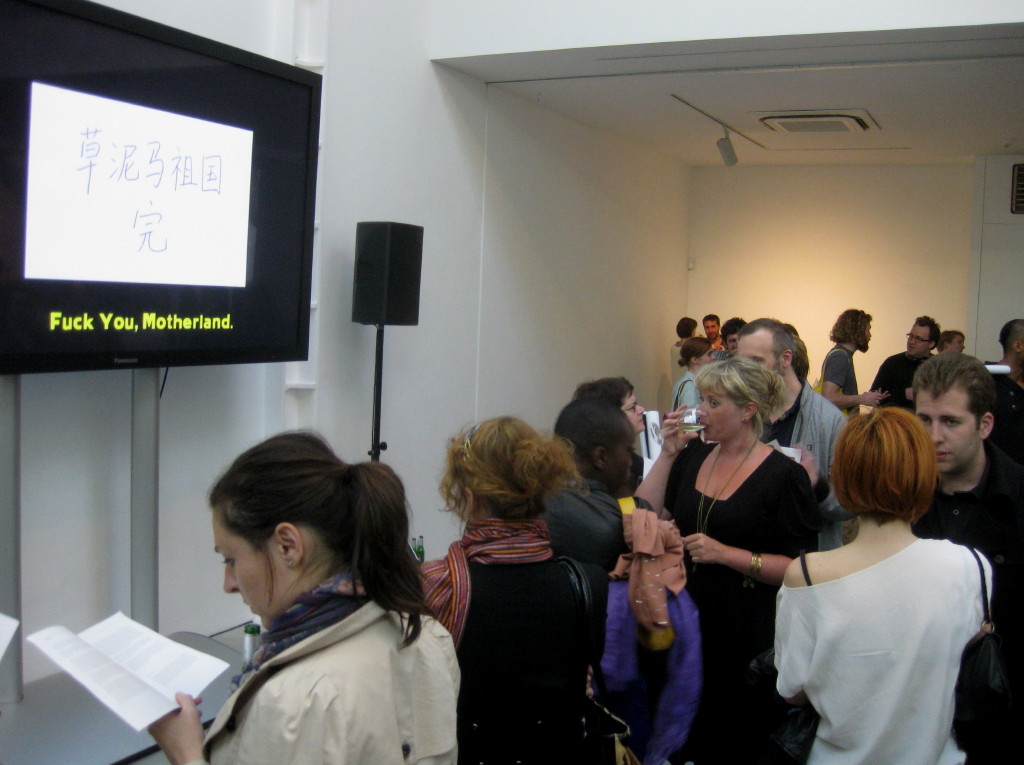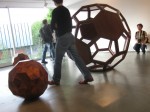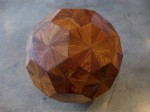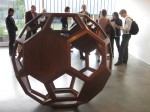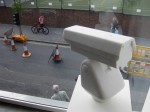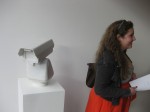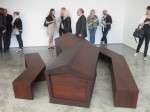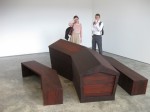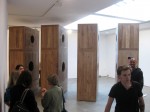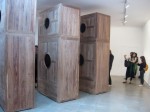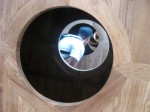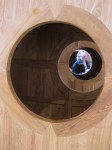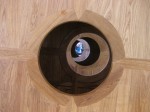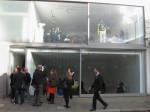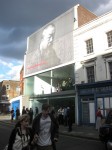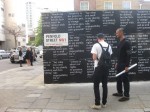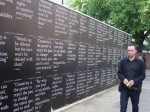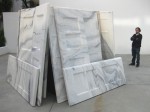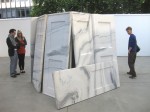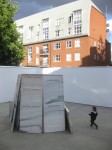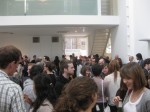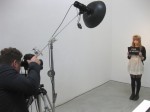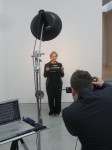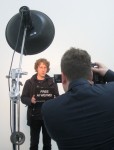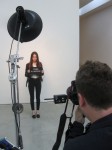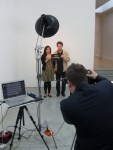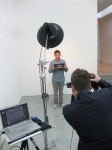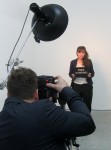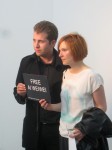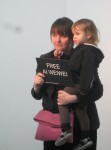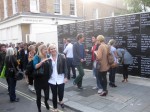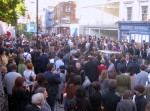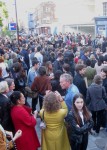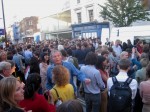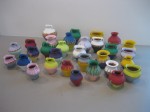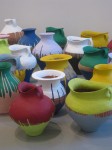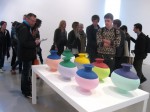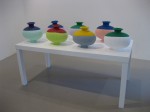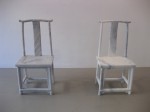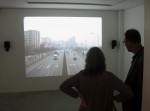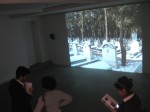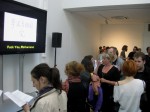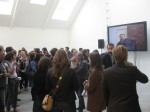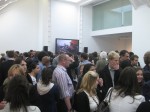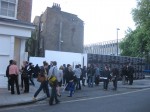On Thursday 12 May, AM attended the opening of the Ai Weiwei exhibition at Lisson Gallery (previewed), spread across both of its spaces on Bell Street in West London. The wide selection of work on display — produced over the last six years and agreed with the artist at the beginning of 2011 — does well to illustrate the playful, evocative and provocative nature of the Ai’s output. Given the show’s breadth and overall strength, we’re sticking our neck out and calling it a must-see.
The exhibition continues until 16 July. It’s currently running alongside Ai Weiwei’s first outdoor public sculpture installation in London, Circle of Animals / Zodiac Heads (also showing in New York), which can be viewed in the courtyard of Somerset House until 26 June. See more images and text covering the Lisson Gallery opening, along with information about Ai’s work and his detention at the hands of the Chinese authorities, after the jump.
Divina Proportione is crafted without nails or screws, using joinery techniques perfected in the Ming Dynasty. Like a football (soccer ball to our US readers), it has 12 pentagonal faces and 20 hexagonal faces. The sculpture is modeled after a toy ball Ai bought for his cat, but named after a Leonardo da Vinci illustration published in 1509. Ai subsequently chanced upon a reproduction of the illustration and was fascinated to find it depicted what he designed five centuries later.
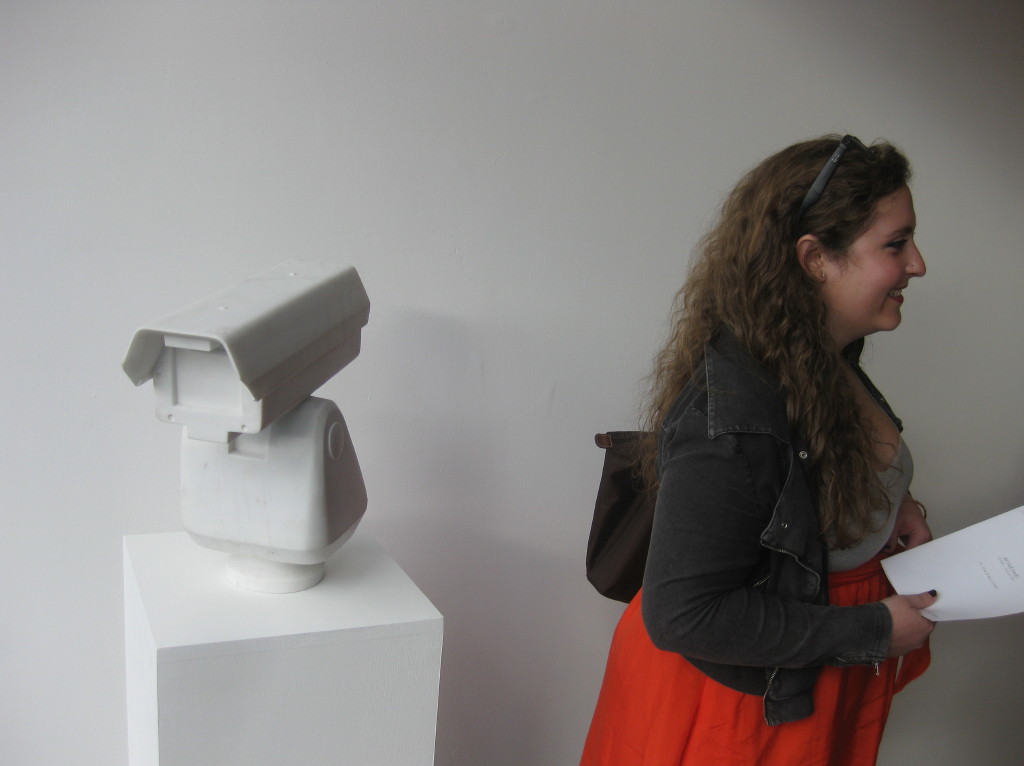
"They're watching us, but who's watching them?". The sculpture — modeled on the cameras installed by undercover police to keep an eye on Ai — is trained on a functioning CCTV camera outside. 'Surveillance Camera'. 2006. Made from a single piece of marble
Yes, we’re patting ourselves on the back and, yes, it’s undignified to do so — but is the above photo great or what?
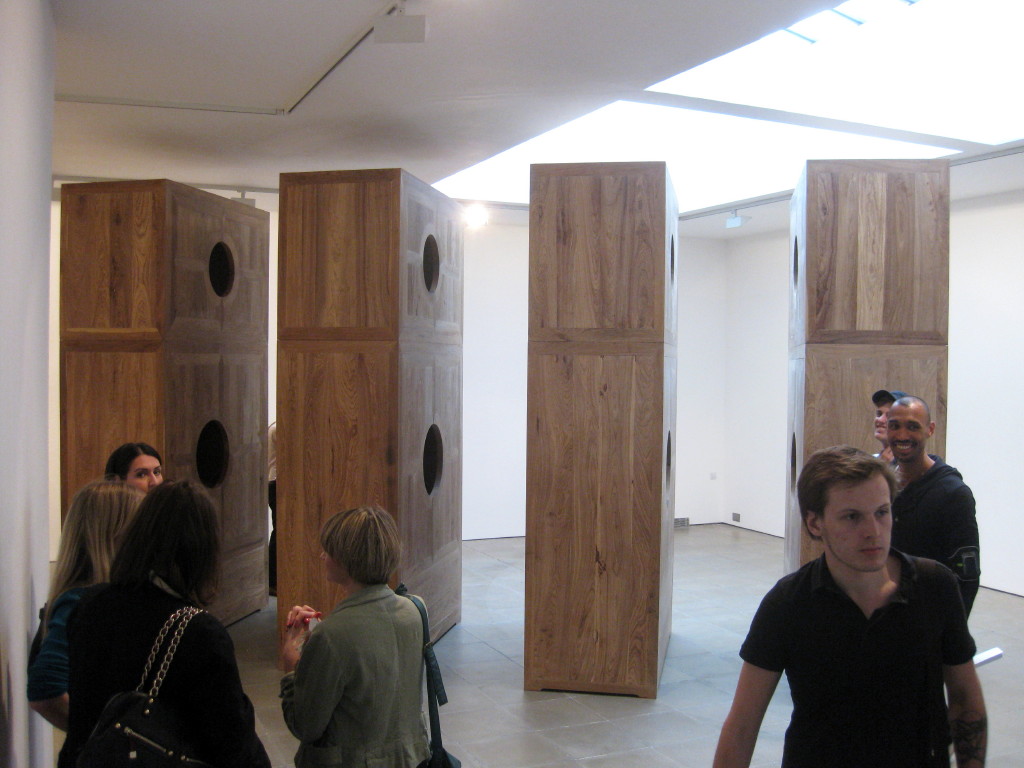
'Moon Chest'. 2008. Hard wood (Huali wood). The placement of the four circular holes in each chest creates the effect of the various stages of a lunar eclipse as one views them from different angles while walking around the exhibition space.
An installation entitled Marble Doors lies in the outdoor courtyard of Lisson Gallery’s 29 Bell Street space. The 56 replicated doors are specifically arranged to resemble scrapyard piles of building material regularly seen in the suburbs of Chinese megacities. At the same time, the expensive marble which the doors are made from calls to mind lastingness, grand sculptures and monuments, as well as tombstones.
Visitors at the private view were invited to have mugshot-style portraits of themselves taken while holding a ‘Free Ai Weiwei’ sign, as part of Lisson Gallery’s picture campaign — which can be viewed here on Facebook and Flickr — to release the artist.
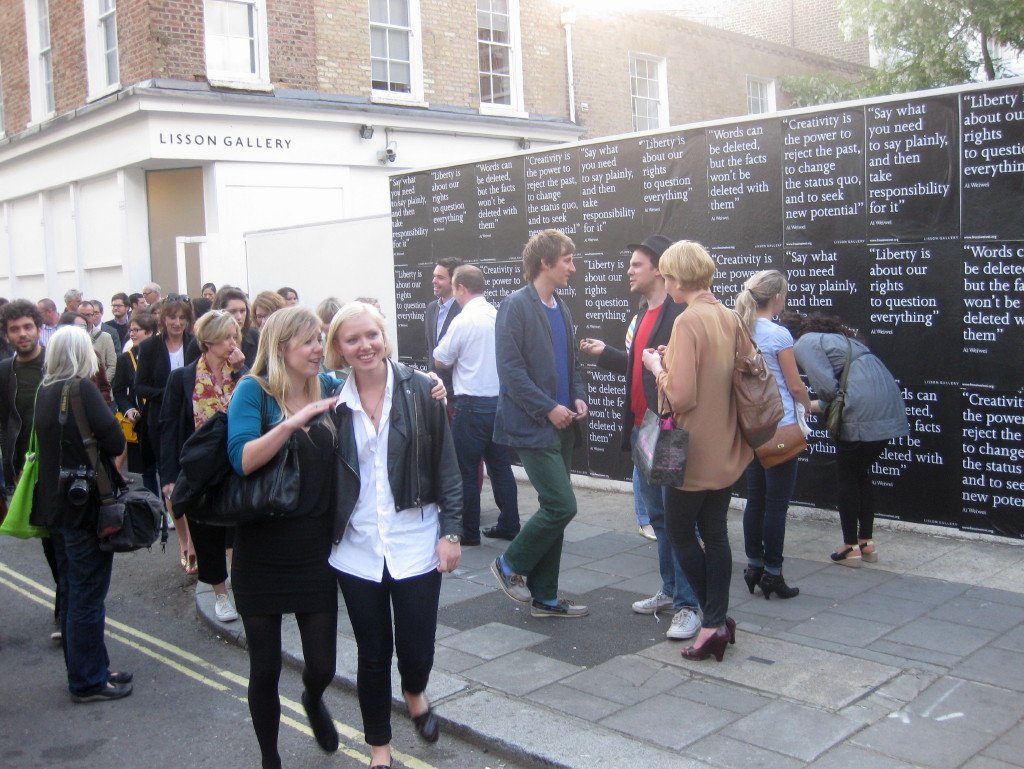
Gallery visitors making their way toward the designated area for a one-minute silence in support of Ai
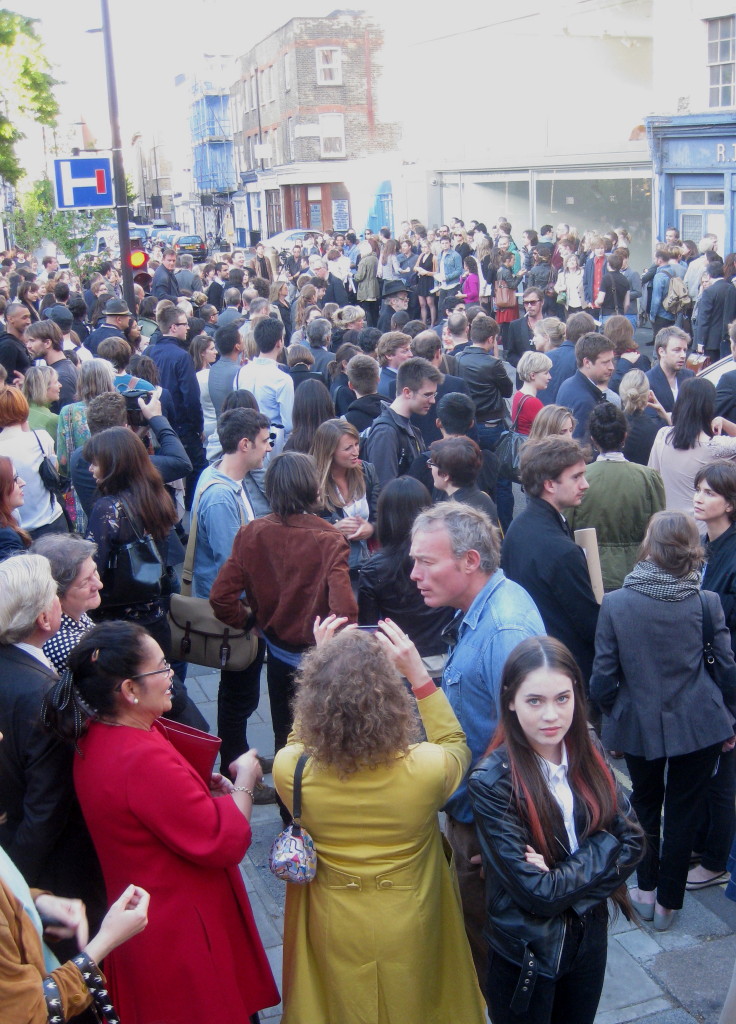
Crowds gathered on Bell Street shortly before the one-minute silence, which ended with the call "Free Ai Weiwei"
Midway through the preview, at 7.15 pm, an outdoor one-minute silence was held in support of Ai, who’s been missing since being led away by authorities at Beijing Capital Airport on 3 April. More information and updates regarding Ai’s detention can be found on www.freeaiweiwei.org, Facebook and Twitter. A petition started by the Solomon R. Guggenheim Foundation calling for the release of Ai Weiwei can be filled out here.
The most shocking work in the exhibition is two installations, both called Coloured Vases, featuring groups of Han Dynasty (206 BC – 220 AD) vases dipped in brightly-coloured industrial paint. Although AM has previously seen comparable pieces by Ai Weiwei, it still took some time for the above descriptions to really sink in and register. Was the desecration based on Ai’s desire to question value? To reject the past and seek new potential? A comment on the organised destruction of culture and historical sites, artefacts and archives during the Cultural Revolution? Or on the continued erosion of Chinese culture — one of the casualties of China’s race to modernise and its thirst for economic progress? Whatever Ai’s intention, the work is both conceptually engaging and aesthetically appealing. That said, thinking about the manner in which it was produced still left us feeling anxious. And perhaps that was also the point.
In the main reception area where drinks were being served on the night, a screen was installed which played stills and video footage of Ai and his work. This included the excellent PBS Frontline series documentary Who’s Afraid of Ai Weiwei? by freelance journalist and filmmaker, Alison Klayman. For readers interested in learning more about the artist, AM recommends Ai Weiwei: Without Fear of Favour from the Imagine arts series, presented by Alan Yentob and first broadcast on BBC One in November 2010.
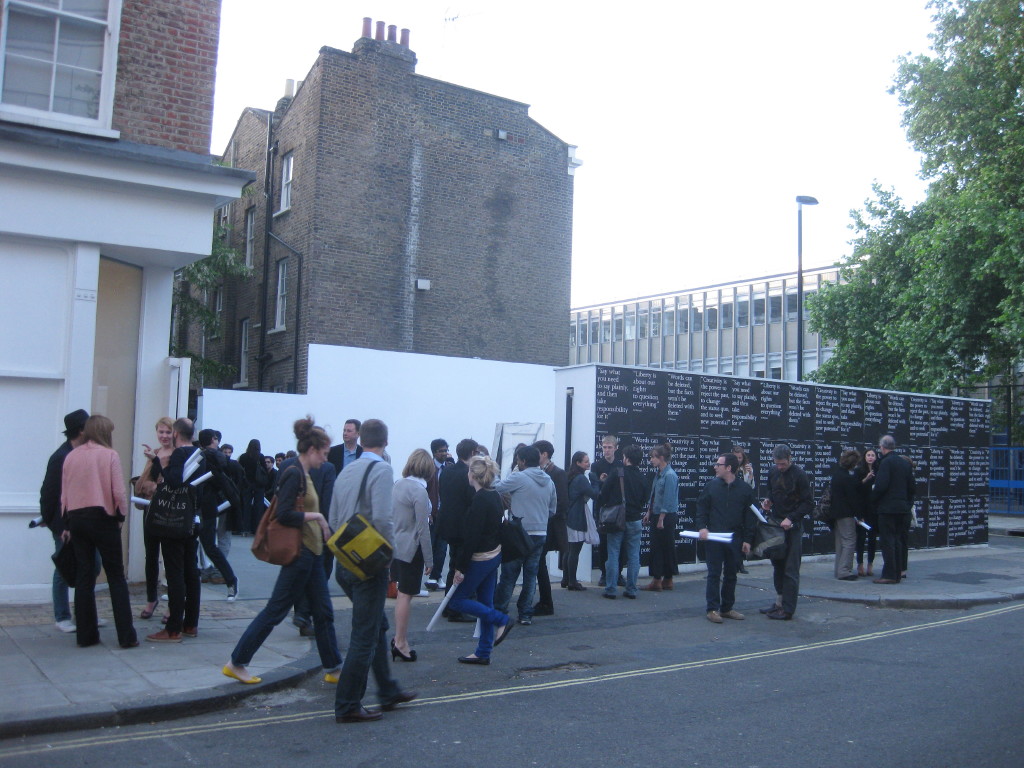
Outside 29 Bell Street as the exhibition preview draws to a close. Many of the visitors are holding posters of quotes by Ai (also pasted along the courtyard wall) distributed by Lisson Gallery on the night.
Are you still reading? Excellent. We like people who don’t give up. Maybe we can form a secret club. There’s a lot to be said for stamina and perseverance.
During the preview evening, Lisson Gallery made available to guests four black-and-white posters, each with a different Ai Weiwei quote. Interested? Well, the gallery kindly offered us a few to give away. As we’ve stockpiled enough instant coffee in the cupboard to last us seven days, the essentials this week are already covered. We’ve therefore decided to sacrifice our food budget to buy postage stamps instead (maybe even the royal wedding commemorative ones with Will and Kate).
Leave a comment below indicating the title or a description of your favourite work by Ai Weiwei. We’ll (i) select three people at random at 9 pm GMT on Friday 20 May, (ii) contact them by email for a mailing address, and (iii) send them each one of the gallery posters in a tube. As for the specific poster each winner receives, it will be potluck: frustrating but also a little bit exciting. Bonne chance!
- ‘Divina Proportione’ (right) and ‘Untitled’ (two smaller sculptures to the left). 2010. Huali wood
- ‘Untitled’. 2010. Huali wood
- ‘Divina Proportione’. 2010. Huali wood
- ‘Surveillance Camera’. 2006. Marble
- “They’re watching us, but who’s watching them?”. The sculpture — modelled on the cameras installed by undercover police to keep an eye on Ai — is trained on a functioning CCTV camera outside. ‘Surveillance Camera’. 2006. Made from a single piece of marble
- ‘Coffin’. 2005. Iron wood from dismantled temples of the Qing Dynasty (1644 – 1911)
- ‘Coffin’. 2005. Iron wood from dismantled temples of the Qing Dynasty (1644 – 1911)
- ‘Moon Chest’. 2008. Hard wood (Huali wood). The placement of the four circular holes in each chest creates the effect of the various stages of a lunar eclipse as one views them from different angles while walking around the exhibition space.
- ‘Moon Chest’. Each chest is assembled using expert joinery methods, without nails or screws.
- Gallery visitor peering through the bottom circles of the four ‘Moon Chest’ sculptures
- Note Ai’s ‘Surveillance Camera’ marble sculpture pointed at a real CCTV camera outside the gallery
- Lisson Gallery’s 52-54 Bell Street premises with two-storey-high www.freeaiweiwei.org banner
- Wheatpasted black-and-white posters, each featuring one of four quotes by Ai Weiwei, lining Lisson Gallery’s courtyard walls
- Posters of quotes by Ai, including “Liberty is about our rights to question everything” and “Say what you need to say plainly, and then take responsibility for it”
- ‘Marble Doors’. 2006. Each of the 56 doors is made from a single piece of marble
- ‘Marble Doors’
- ‘Marble Doors’
- Preview reception area at Lisson Gallery’s 29 Bell Street space
- Free Ai Weiwei. Guests could have their mug shot taken as part of the gallery’s picture campaign on Facebook and Flickr to release the artist.
- Guests having their portrait taken holding a ‘Free Ai Weiwei’ placard in silent protest.
- Gallery visitors making their way toward the designated area for a one-minute silence in support of Ai
- Crowds gathered on Bell Street shortly before the one-minute silence, which ended with the call “Free Ai Weiwei”
- ‘Coloured Vases’. 2010. 31 Han Dynasty vases and industrial paint
- ‘Coloured Vases’ (detail)
- ‘Coloured Vases’. 2009. 7 Han Dynasty vases and industrial paint
- ‘Coloured Vases’
- ‘Marble Chairs’. 2008. Each chair is made from a single piece of marble
- ‘Second Ring’. 2005. Film. The video is of 66 one-minute segments documenting the traffic flow on 33 bridges along Beijing’s Second Ring.
- ‘Chang’an Boulevard’. 2004. Film. The film consists of 608 one-minute segments video mapping Chang’an Boulevard in a sequence of measured distances along its 45 km length, offering the viewer “a chance to stop and look at the city with a clarity that could never be achieved without the camera’s mechanical indifference.”
- Footage featuring images of and works by Ai at the preview reception area
- Alison Klayman’s documentary, ‘Who’s Afraid of Ai Weiwei?’ being screened during the preview
- Outside 29 Bell Street as the exhibition preview draws to a close. Many of the visitors are holding posters of quotes by Ai (also pasted along the courtyard wall) distributed by Lisson Gallery on the night.
Text and photographs by Patrick Nguyen.
Discuss Ai Weiwei here.



